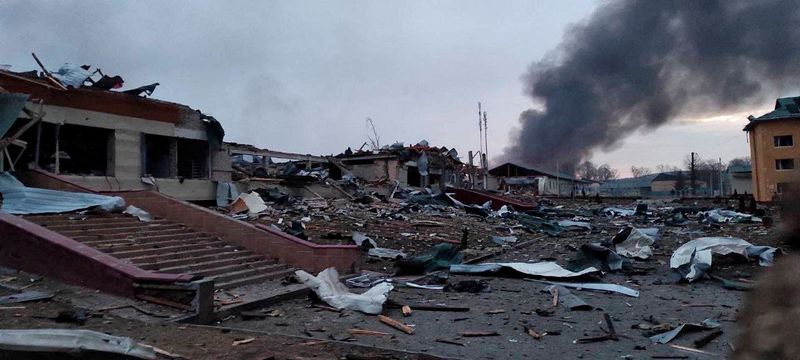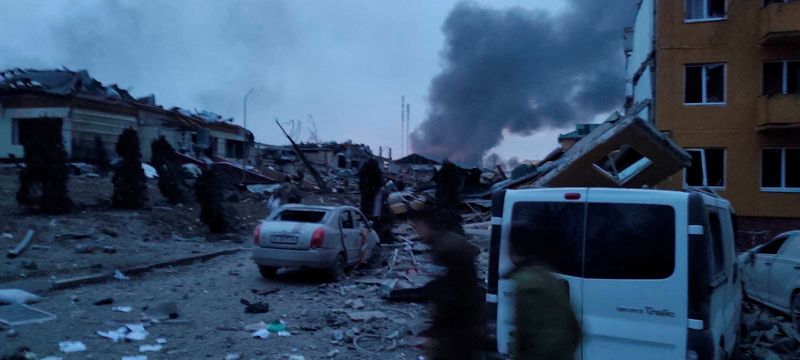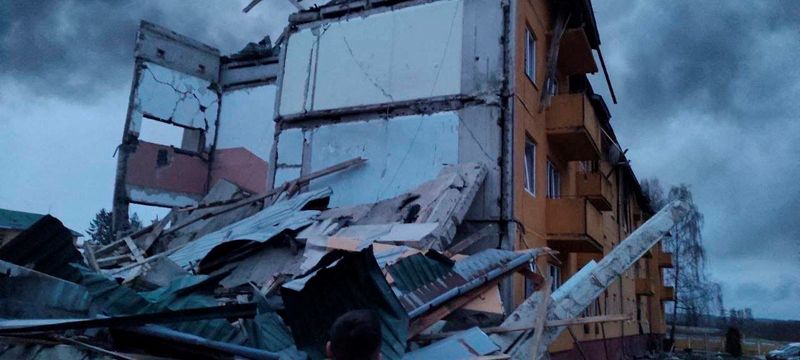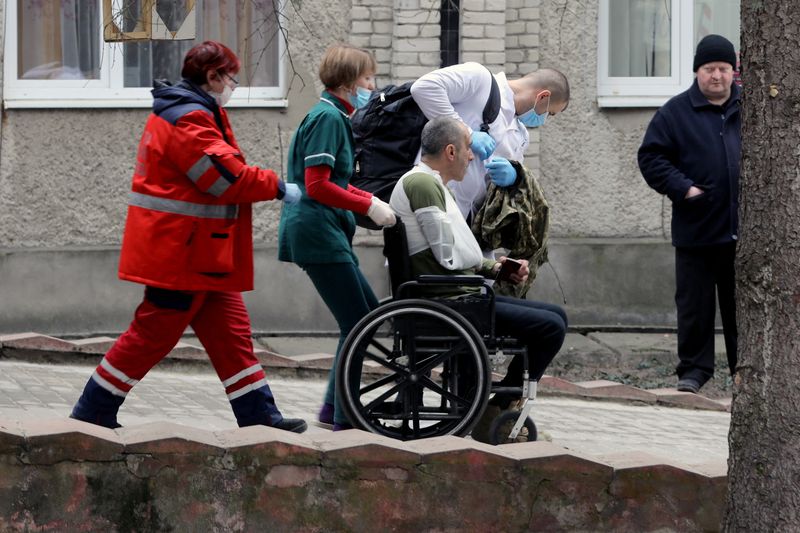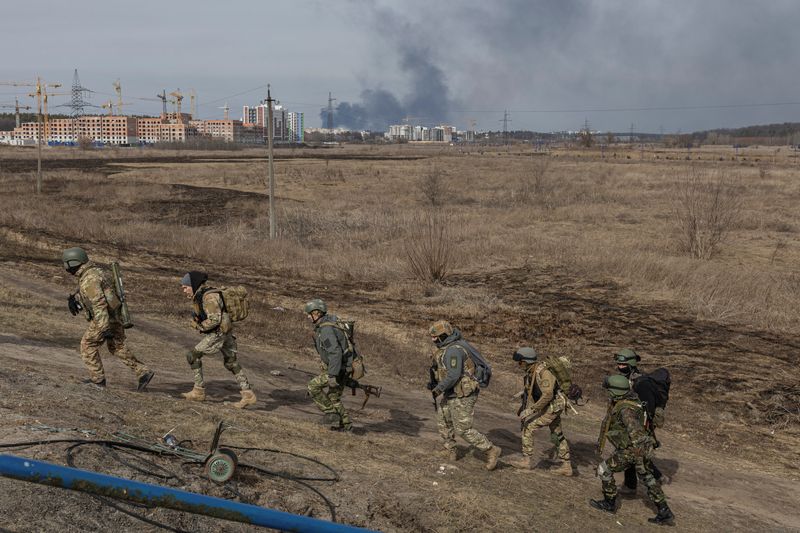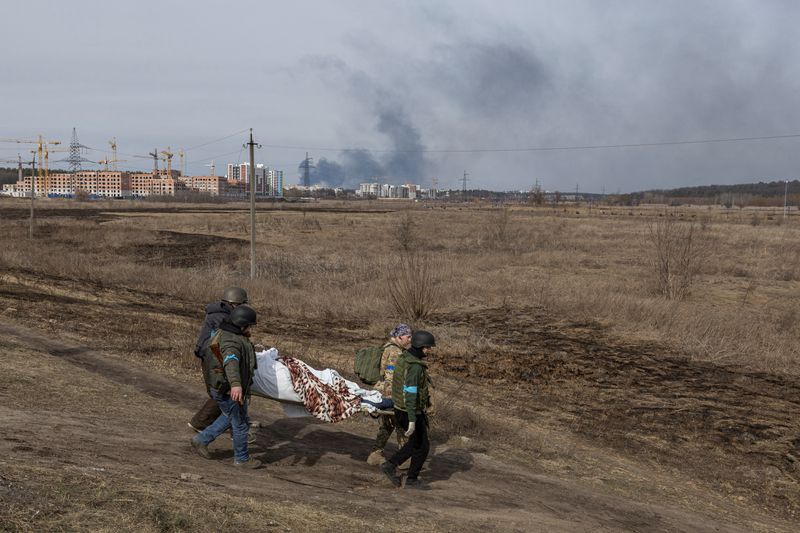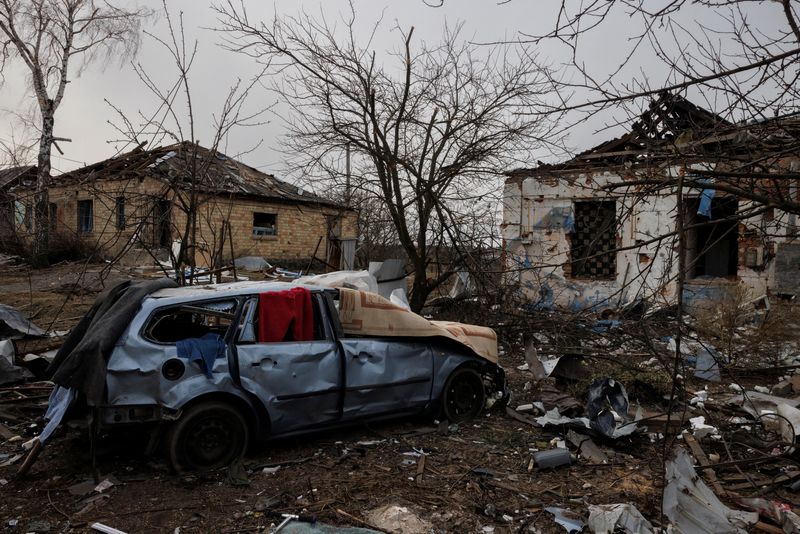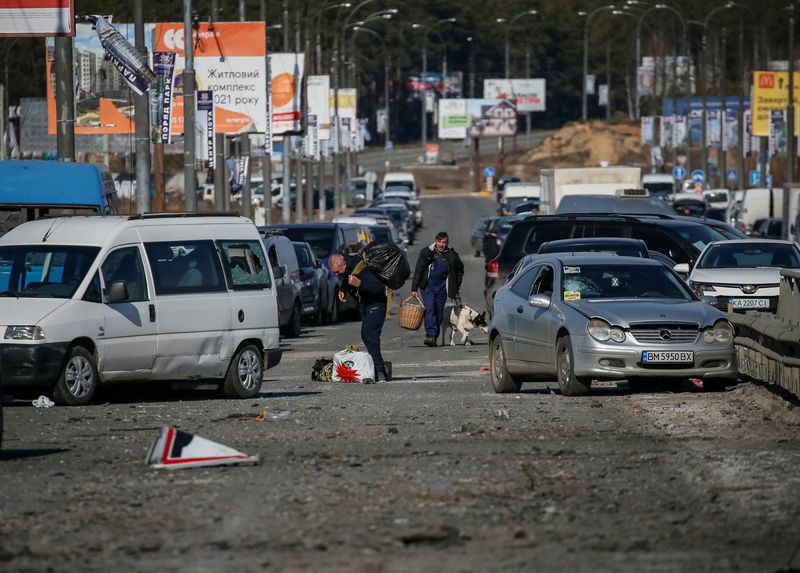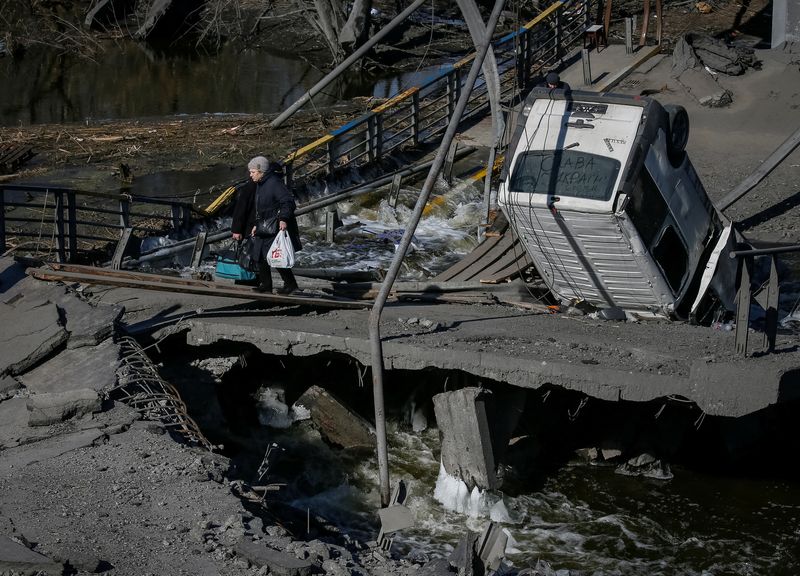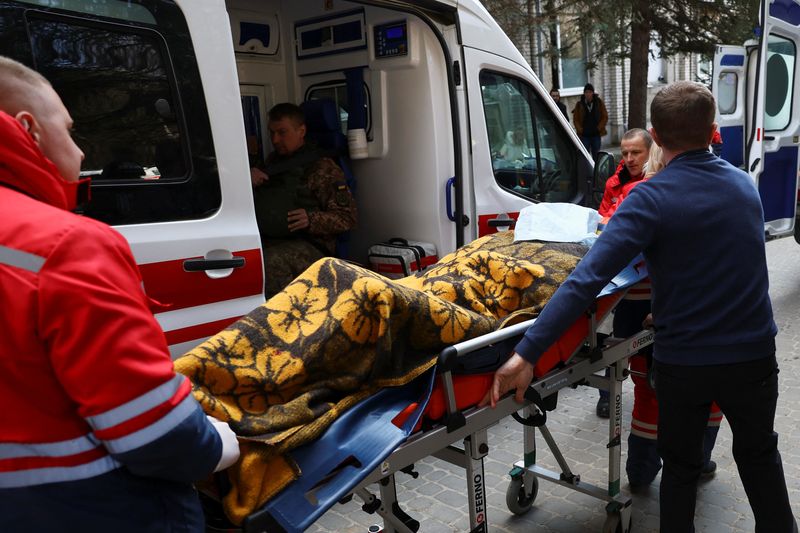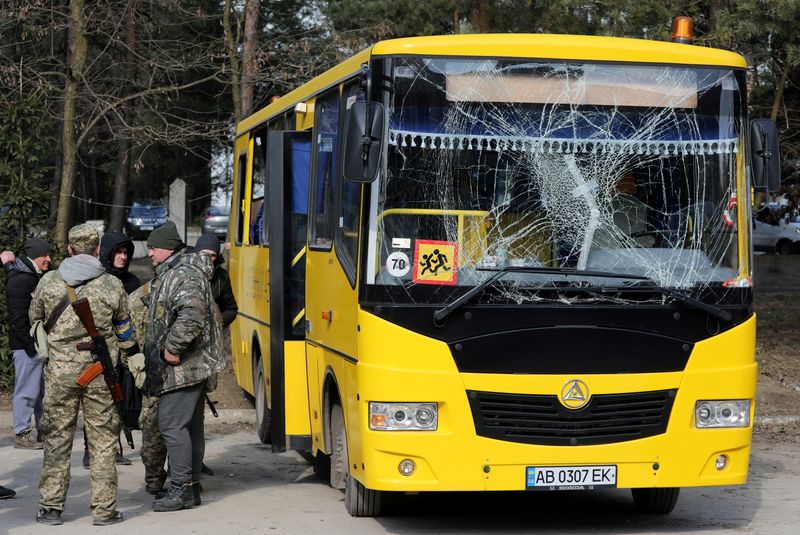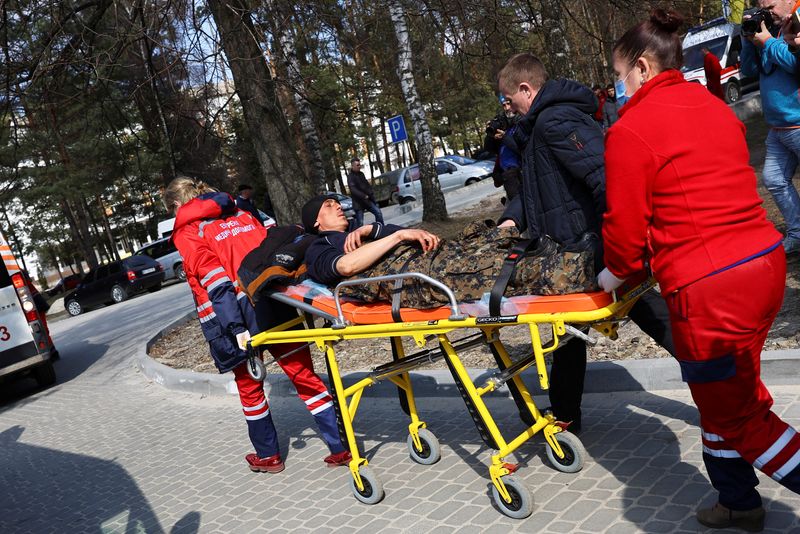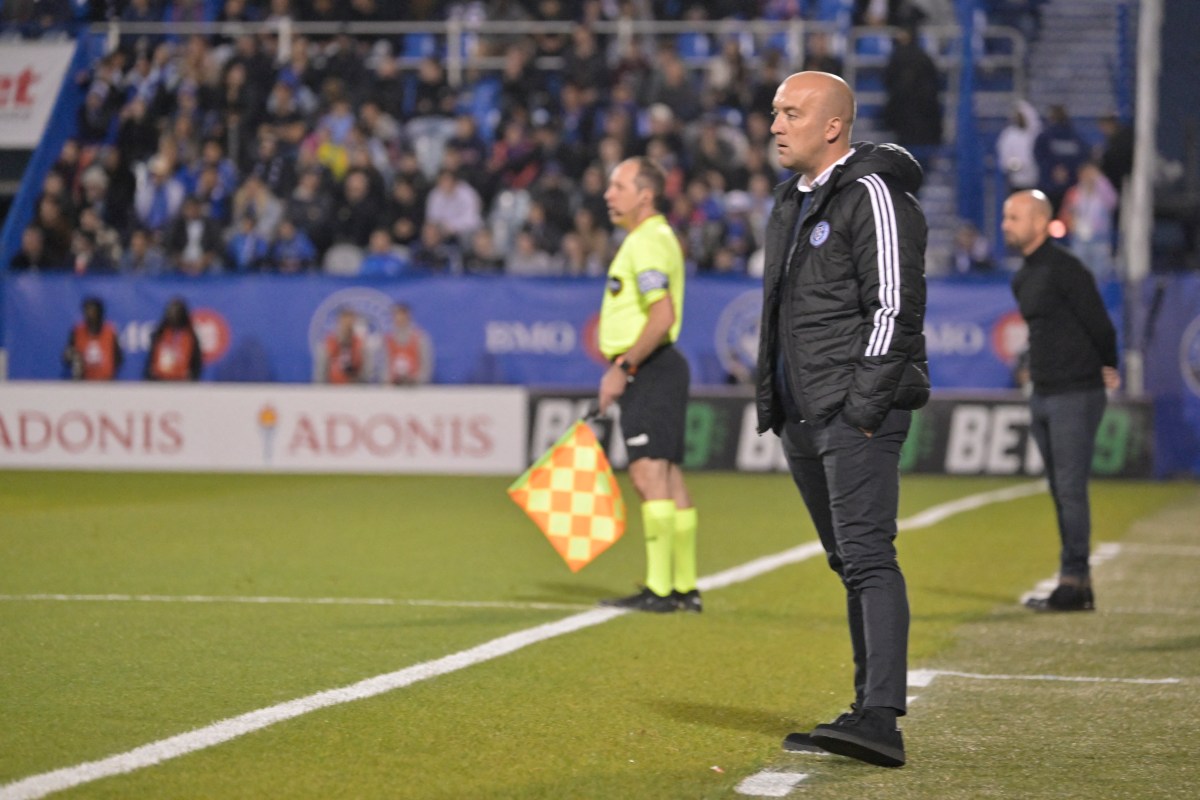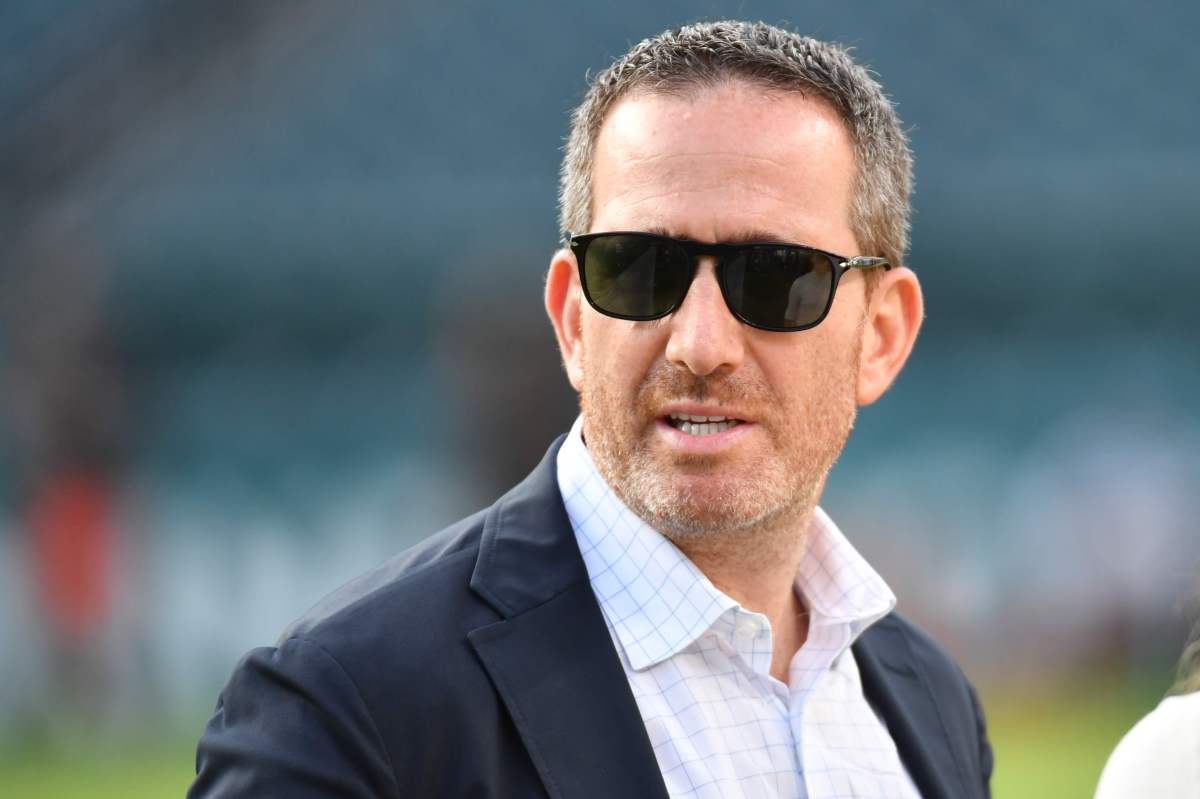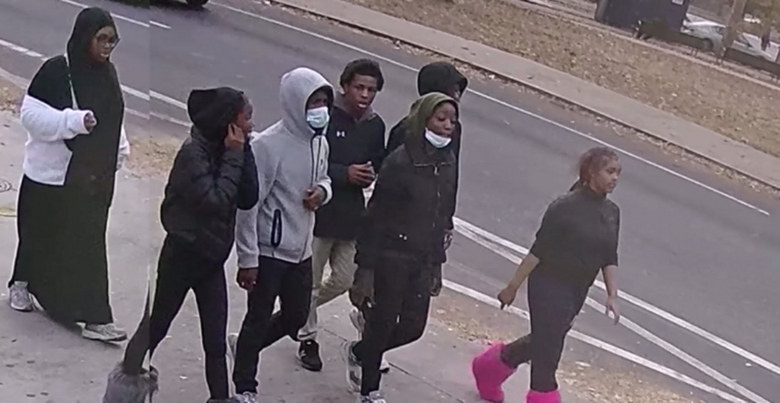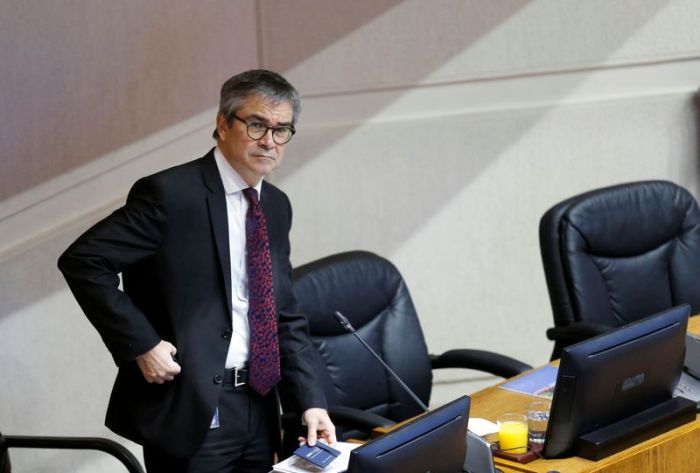LVIV, Ukraine (Reuters) -A barrage of Russian missiles hit a large Ukrainian base near the border with NATO member Poland on Sunday, killing 35 people and wounding 134, a local official said, in an escalation of the war to the west of the country as fighting raged elsewhere.
Russia’s defence ministry said the air strike had destroyed a large amount of weapons supplied by foreign nations that were being stored at the sprawling training facility, and that it had killed “up to 180 foreign mercenaries”.
Reuters could not independently verify the casualties reported by either side.
The attack on the Yavoriv International Centre for Peacekeeping and Security, a base just 15 miles (25 km) from the Polish border that has previously hosted NATO military instructors, brought the conflict to the doorstep of the Western defence alliance.
Russia had warned on Saturday that convoys of Western arms shipments to Ukraine could be considered legitimate targets.
Britain called the attack as a “significant escalation,” and U.S. Secretary of State Antony Blinken responded with a post on Twitter saying “the brutality must stop.”
White House national security adviser Jake Sullivan, speaking on CBS’s “Face the Nation”, warned any attack on NATO territory would trigger a full response by the alliance.
Regional governor Maksym Kozytskyy said Russian planes fired around 30 rockets at the Yavoriv facility.
Russian defence ministry spokesperson Igor Konashenkov said Russia had used high-precision, long-range weapons to strike Yavoriv and a separate facility in the village of Starichi.
“As a result of the strike, up to 180 foreign mercenaries and a large amount of foreign weapons were destroyed,” he said.
The 360-square km (140-square mile) facility is one of Ukraine’s biggest and is the largest in the western part of the country, which has so far been spared the worst of the fighting.
Ukraine, whose aspirations to join NATO are a major irritant to Russian President Vladimir Putin, held most of its drills with Western countries at the base before the invasion. The last major exercises were in September.
In the weeks before Russia’s Feb. 24 invasion, the Ukrainian military trained there, but according to Ukrainian media all foreign instructors left in mid-February, leaving behind equipment.
“The dining room and dormitory were destroyed. So were the barracks,” said Colonel Leonid Benzalo, an officer in the Ukrainian medical reserve who was thrown across the room by one of the blasts. “The most important thing is we’re still alive,” he told Reuters after treating the wounded there.
While Western nations have sought to isolate Putin by imposing harsh economic sanctions and have been supplying Ukraine with weapons, the United States and its allies are concerned to avoid NATO being drawn into the conflict.
“There are no NATO personnel in Ukraine,” the NATO official said, when asked if anyone from the alliance was at the base.
STOCKPILING FOOD
Heavy fighting was reported on multiple fronts.
Air raid sirens wailed across the capital Kyiv and authorities said they were stockpiling two weeks worth of food for the 2 million people who have not yet fled from Russian forces attempting to encircle the city.
Ukraine reported renewed air strikes on an airport in the west and heavy shelling on Chernihiv, northeast of the capital.
Interior Ministry official Vadym Denyenko said Ukrainian forces were counterattacking in the eastern Kharkiv region and around the southern town of Mykolayiv. Reuters was not able to verify those statements.
An American journalist was shot and killed by Russian forces in the town of Irpin, northwest of Kyiv, and another journalist was wounded, the regional police chief said.
Britain’s defence ministry said Russian naval forces had established a distant blockade of Ukraine’s Black Sea coast, isolating the country from international maritime trade.
“We must hold on. We must fight. And we will win,” Ukrainian President Volodymyr Zelenskiy said in a nighttime video address.
Despite the violence, both sides gave their most upbeat assessment yet of prospects for progress at talks held periodically.
“Russia is already beginning to talk constructively,” Ukrainian negotiator Mykhailo Podolyak said in a video online. “I think that we will achieve some results literally in a matter of days.”
A Russian delegate to talks, Leonid Slutsky, was quoted by RIA news agency as saying they had made significant progress and it was possible the delegations could soon reach draft agreements.
Neither side said what these would cover. Three rounds of talks between the two sides in Belarus, most recently last Monday, had focused mainly on humanitarian issues.
Zelenskiy said the countries’ delegations have been speaking daily by video link and a clear aim of his negotiators was to “do everything” to arrange for him to meet with Putin.
‘VIOLENT AND INHUMAN’
In the weeks since the invasion began, Russia has asked China – which has not condemned the assault on Ukraine – for military equipment, the Financial Times and Washington Post cited unnamed U.S. officials as saying.
A spokesperson for the Chinese embassy in Washington said he had not heard of such a request and that the priority was to prevent the situation “from escalating or even getting out of control.”
Russia’s invasion has sent more than 2.5 million people fleeing across Ukraine’s borders and trapped hundreds of thousands in besieged cities.
“It is terrifying how violent and inhuman it is,” Olga, a refugee from Kyiv, told Reuters after crossing into Romania.
Ukraine’s human rights monitor said Russia used phosphorous bombs in an overnight attack on the town of Popasna in the eastern Luhansk region, calling it a “war crime”. She shared a photograph purporting to show the alleged attack. Reuters could not immediately verify any of the reports.
Phosphorus munitions can be used legally in war to provide light, create smokescreens or burn buildings. But its use in populated areas has been a persistent source of controversy.
In eastern Ukraine, Russian troops were trying to surround Ukrainian forces as they advance from the port of Mariupol in the south and the second city Kharkiv in the north, the British Defence Ministry said.
The city council in Mariupol said 2,187 residents had been killed since the start of the invasion. Reuters was not able to verify that toll.
Kharkiv has suffered some of the heaviest bombardment. Videos from one resident, Teimur Aliev, showed bombed buildings lining streets, burned-out cars riddled with shrapnel holes and debris strewn around.
“We will stitch up the wounds and the pain of our country and our city,” said Aliev, a 23-year-old musician. “We’re not going anywhere.”
In Chernihiv, northeast of Kyiv, firefighters rescued residents from a burning building after heavy shelling, video from emergency service – and verified by Reuters – showed.
Moscow denies targeting civilians. It blames Ukraine for failed attempts to evacuate civilians from encircled cities, an accusation Ukraine and its Western allies strongly reject.
Ukrainian Deputy Prime Minister Iryna Vereshchuk said more than 140,000 people had been evacuated from conflict zones, but a humanitarian convoy had been unable to reach Mariupol due to shelling.
The Kremlin describes its actions as a “special operation” to demilitarise and “deNazify” Ukraine. Ukraine and Western allies call this a baseless pretext for a war of choice.
(Reporting by Reuters bureaus; Writing by Michael Perry, Philippa Fletcher, Alex Richardson and Matt Spetalnick; Editing by William Mallard, Frances Kerry, Daniel Wallis and Lincoln Feast.)

